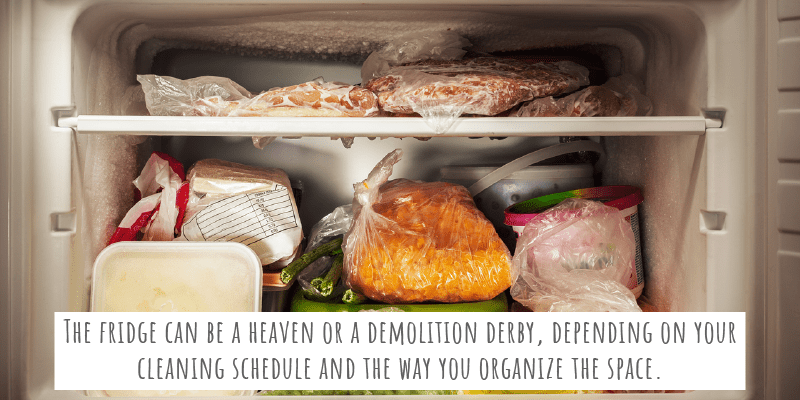3 Household Hotspots and How to Organize Them
We all have places in our house that need “special care”. They are our organizational Achilles’ heels, and we need tips on how to keep them clean and tidy, like, yesterday. Every ‘hot spot’ is personal to the individual and each type will want to organize them differently. However there are a few universal snag-worthy places that, no matter how hard we try, we can never quite keep orderly. Perhaps this is because each place is constantly functioning. Moving. Take, for example, the laundry room.
If your house is anything like ours, there is a constant cycle of clothing coming in and going out — we could ostensibly spend our entire lives doing laundry and nothing else. Laundry is endless. Same with the coat closet — coats are forever being taken off hooks and being put back on hooks, or hangers, or, in a lot of cases, thrown on the floor. The hot spots are places of activity and transition, which is why having organizational systems in place is essential. Read on for tips and tricks to manage each and every place in your house where you feel like you’re constantly putting it in order, over and over again.
The Laundry Room

We start with this room because it’s the biggest and most problematic thorn in our organizational side. First off, the key to getting this room in order is to accept and acknowledge that laundry will constantly need to be done. However, you can begin to reign in the chaos by creating a laundry schedule. (If this idea makes you cringe, we apologize — but when you see how much easier it will make things down in the basement or in the laundry room, you’ll thank us.)
Create designated days and times to do laundry. Be specific with the duties and give each a day. For example, sort on Mondays, wash/dry Tuesdays (or any other day where you have extra time), iron and fold on Wednesdays, and put clothes away on Thursdays. Fridays are the time for new ‘dirty’ clothes to be transferred to the laundry area, to be sorted on the following Monday. It seems like a lot of work, and it is! But there are ways to make the entire process easier.
First, communicate with the rest of your household what the schedule is, and set expectations around what each person’s role will be. For example, letting the kids know that their hampers need to be filled (which translates into, “all dirty clothes need to be off the floor and in the hamper) and in the laundry area by Monday morning will remove a step from your process. Buying matching hampers and labeling them each by name will help kids complete their part, as well as help you stay organized and keep everything straight.
There are also some tools that will help you keep the laundry area fully operative and running smoothly to help make your job easier.
Here are some of our favorite Laundry Room Essentials:
-Pottery Barn makes a modular laundry set that can be hung on the wall for optimum space efficiency. The set includes one 8-Peg Rail, two 4-Peg Rails, one Drying Rack, one Wood Multi Shelf and one Hanging Canvas Hamper. If you need more storage, buy two and set them up on adjoining or opposite walls (one wall devoted to kids’ laundry, the other to yours and your partner’s.
–An ironing board rack also helps to save floor space. Pottery Barn makes one that has a chrome basket atop of it for storage (iron, spray bottle, etc).
-Create a designated folding station with a large table or cabinet, preferably with edges to keep the clothes from slipping off the surface. Remember that storage is best utilized vertically, so much of your wall space will be covered, leaving you more room for a large table to fold clothes. If you can find one with room underneath for easy sorting, all the better.
Fridge
 Let’s face it: The fridge can be a heaven or a demolition derby, depending on your cleaning schedule and the way you organize the space. Here are some basic rules-to-live-by when it comes to keeping your frigidaire calm, cool and collected:
Let’s face it: The fridge can be a heaven or a demolition derby, depending on your cleaning schedule and the way you organize the space. Here are some basic rules-to-live-by when it comes to keeping your frigidaire calm, cool and collected:
- Don’t overfill. Doing this interferes with good air circulation and ultimately keeps food items less cool.
- Buy sliding bins or baskets to store produce or fruit in.
- Label the sliding bins or baskets.
- Line your shelves and fridge surfaces with plastic mats that are easy to clean and stick well, so as not to get any liquid or icky residue underneath.
- Store your salads in mason jars to keep them fresh longer.
- Use glass, not plastic containers to store leftovers — this will keep them in your sights and not going to waste due to forgetting about them.
- Don’t mix produce, fruits and meat in the same area or drawer. This leads to contamination and food waste. Keep veggies in one crisper drawer, fruit in the other, and meat carefully wrapped on a bottom shelf, where drips won’t contaminate other items.
- Keep your dairy and milk products in the center of the fridge, where they will keep the coolest. Keeping them in a place like the fridge door (how many of us have done this?) isn’t wise, simply because the door is always opening, leading to ineffective temperature control and ultimately affecting the quality of the milk or dairy product.
- When you come home from a shopping trip, bring all the food that’s currently in your fridge to the front, and put the newer food in the back. The reason for this is obvious, and it mimics the stocking patterns in grocery stores.
- Clean your fridge every week, or every couple weeks. Throw out the things that have expired or gone bad, and make sure to wipe up any renegade crumbs or sticky spills with an antibacterial wipe.
Coat Closet

We’ve gone over this already in past postings about the entryway, but coat closets can be wild places, particularly if you have children. (And even sometimes when you don’t.) We like to encourage people to first purge the coats they don’t wear. This means, get rid of all things you never wear that live in your coat closet. If your great Aunt Hilda’s leopard print fur stole is hanging in the closet and taking up space, put it in a Later Box and store it in the attic.
The second thing you need to do is separate the coats by season. Mount a coat rack (or two, or three) in the attic and keep the out-of-season coats there. When it’s time to bring them down, transfer the ones that are no longer in season. Store the winter and wool coats in plastic and put them in a cedar filled chest (or you can use mothballs, if you’re so inclined). The point of this is to create an easy rotation that will eliminate the glut of the coat closet (we know you know how it feels to body slam a closet shut).
Lastly, please mount hooks on the walls in and outside the closet, and use labels above the hooks, just like they did in elementary school with cubbies. This way, kids will have an easier time keeping their coat hung up instead of on the floor, and you will have a cleaner closet (with floor space for shoes or boots and not coats!).
A Last Word
Chances are, if you’re able to employ these tactics in these tricky places, you’ll have a much more organized and smoothly-run household. The transition might be tough, but if you are consistent in your schedule and delegation of duties to the rest of your family, they’ll catch on. They’ll even thank you for it, by and by (just don’t hold your breath!).
